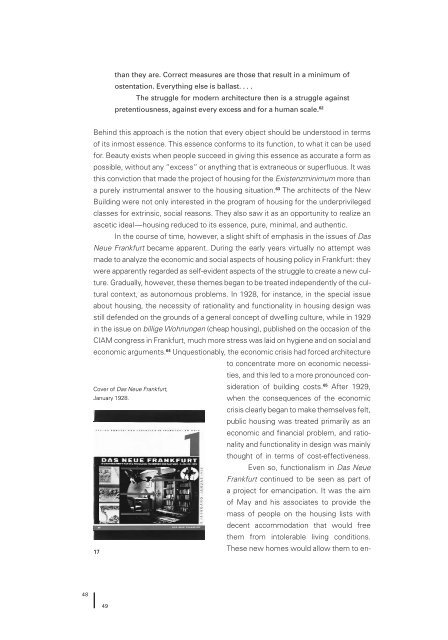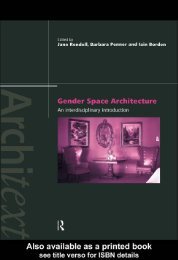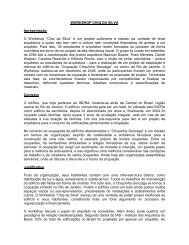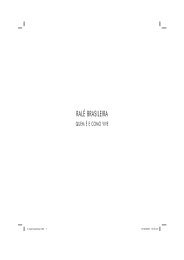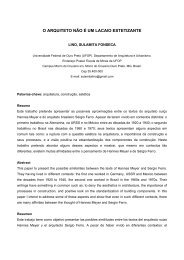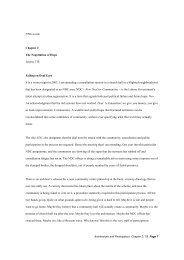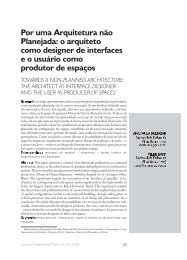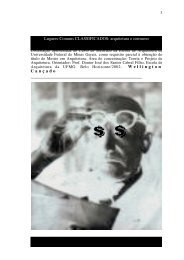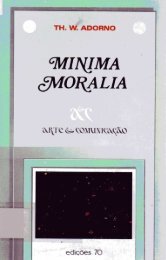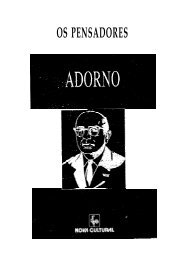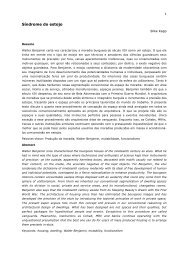Architecture and Modernity : A Critique
Architecture and Modernity : A Critique
Architecture and Modernity : A Critique
Create successful ePaper yourself
Turn your PDF publications into a flip-book with our unique Google optimized e-Paper software.
48<br />
49<br />
than they are. Correct measures are those that result in a minimum of<br />
ostentation. Everything else is ballast. . . .<br />
The struggle for modern architecture then is a struggle against<br />
pretentiousness, against every excess <strong>and</strong> for a human scale. 62<br />
Behind this approach is the notion that every object should be understood in terms<br />
of its inmost essence. This essence conforms to its function, to what it can be used<br />
for. Beauty exists when people succeed in giving this essence as accurate a form as<br />
possible, without any “excess” or anything that is extraneous or superfluous. It was<br />
this conviction that made the project of housing for the Existenzminimum more than<br />
a purely instrumental answer to the housing situation. 63 The architects of the New<br />
Building were not only interested in the program of housing for the underprivileged<br />
classes for extrinsic, social reasons. They also saw it as an opportunity to realize an<br />
ascetic ideal—housing reduced to its essence, pure, minimal, <strong>and</strong> authentic.<br />
In the course of time, however, a slight shift of emphasis in the issues of Das<br />
Neue Frankfurt became apparent. During the early years virtually no attempt was<br />
made to analyze the economic <strong>and</strong> social aspects of housing policy in Frankfurt: they<br />
were apparently regarded as self-evident aspects of the struggle to create a new culture.<br />
Gradually, however, these themes began to be treated independently of the cultural<br />
context, as autonomous problems. In 1928, for instance, in the special issue<br />
about housing, the necessity of rationality <strong>and</strong> functionality in housing design was<br />
still defended on the grounds of a general concept of dwelling culture, while in 1929<br />
in the issue on billige Wohnungen (cheap housing), published on the occasion of the<br />
CIAM congress in Frankfurt, much more stress was laid on hygiene <strong>and</strong> on social <strong>and</strong><br />
economic arguments. 64 Unquestionably, the economic crisis had forced architecture<br />
to concentrate more on economic necessities,<br />
<strong>and</strong> this led to a more pronounced consideration<br />
of building costs. 65 Cover of Das Neue Frankfurt,<br />
After 1929,<br />
January 1928.<br />
when the consequences of the economic<br />
crisis clearly began to make themselves felt,<br />
public housing was treated primarily as an<br />
economic <strong>and</strong> financial problem, <strong>and</strong> rationality<br />
<strong>and</strong> functionality in design was mainly<br />
thought of in terms of cost-effectiveness.<br />
Even so, functionalism in Das Neue<br />
Frankfurt continued to be seen as part of<br />
a project for emancipation. It was the aim<br />
of May <strong>and</strong> his associates to provide the<br />
mass of people on the housing lists with<br />
decent accommodation that would free<br />
them from intolerable living conditions.<br />
These new homes would allow them to en-<br />
17


